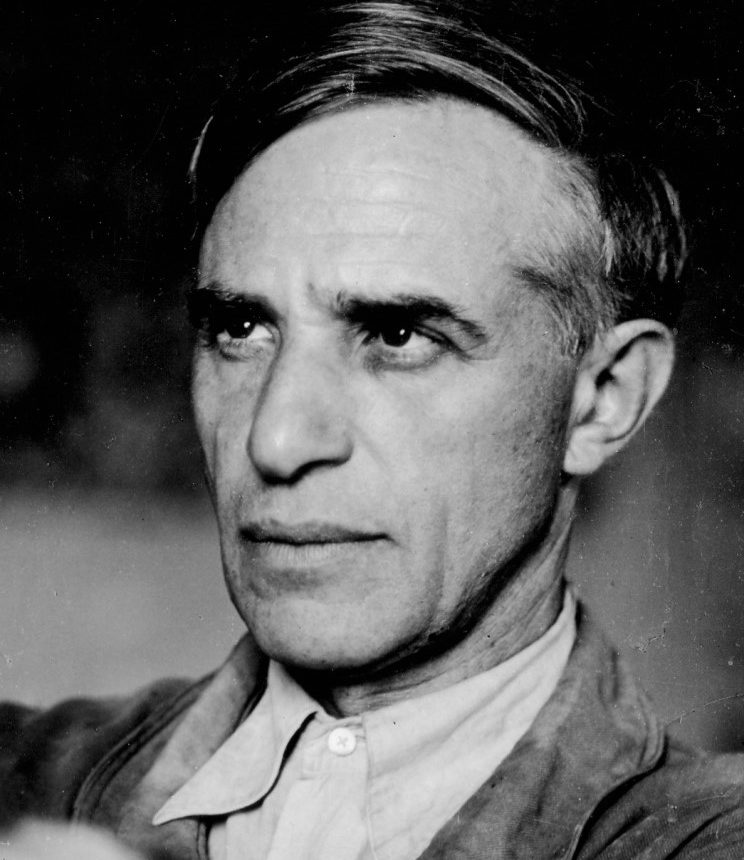Irina CODREANU
January 4, 2019Jacques CYTRYNOWICZ
January 4, 2019Joseph CONSTANT (born Joseph Constantinovsky or Constantinovitch)
JAFFA (PALESTINE) 1892 – PARIS 1969
Joseph Constant was born in Palestine in 1892 and grew up in Odessa. When he was young, he used to work with his father, an ironsmith. They both participated in the revolutionary events in 1905. In 1912, Constant enrolled in the School of Fine Arts in Odessa, where he first studied painting. During the Russian Revolution in 1917, he was appointed Fine Arts Inspector.
In 1919, his father and brother were killed in a pogrom. Together with many other artists, Constant and his wife fled Russia for Palestine aboard the Ruslan. In Tel Aviv, he made friends with the painter Alexandre Frenel. He traveled to Egypt, Turkey, and Romania. In 1923, Constant arrived in Paris, where he studied art.
In the beginning of his career, Constant painted animal paintings. He used pencil, charcoal, and ink and also produced watercolors and oils on canvas. During the 1930s, he mainly created animal sculptures. He worked in stone, bronze, and, especially, in wood. He visited the Jardin des Plantes every day, where he found inspiration. He was a member of a group of Israeli artists called the “Animalists.”
In Paris, Constant also developed a writing career. He wrote several books under the name Michel Matveev. His most famous work Les Traqués (The Hunted) was published in 1933 and relates the tragic story of Jews traveling across Europe in search of a safe haven. In 1936, he was awarded the Deux Magots Prize for his book Etrange Famille (Strange Family). In La Cité des Peintres (The Painters’ City), published in 1947, he wrote about the life of the Russian Jewish artists in Montparnasse.
Joseph Constant and his friend the painter Alexandre Frenel are known as the artists of the School of Paris who introduced French Impressionism and realism in Israel. They were the first artists who opposed the hegemony of the Bezalel art school. Constant and Frenel were also known for their bohemian lifestyle, which differed from the ideals and the reality of the pioneer society in which they lived.
During the 1950s, he often traveled to Israel. He spent half of his life working at his studio in Montparnasse and the other one at his studio in Israel (first in Tel Aviv, then in Ramat Gan). His studio in Ramat Gan became a sculpture gallery.
Stories of Jewish Artists of the School of Paris 1905-1939
FRENCH-ENGLISH
Capitale des arts, le Paris des années 1905-1939 attire les artistes du monde entier. De cette période de foisonnement, un terme est resté, celui d'Ecole de Paris, qui recouvre une grande diversité d'expression artistique. Dans ce brassage dont Montparnasse est le creuset, un groupe se distingue : celui des artistes juifs venus de Russie, de Pologne et d'Europe centrale. Si leurs styles sont variés, un destin commun les rassemble : ils fuient l'antisémitisme de leur pays d'origine. Certains ont connu la célébrité dès les années 1920, tels Soutine, Lipchitz ou Chagall. D'autres n'ont pas eu le temps ou la chance d'y accéder. Près de la moitié a péri dans les camps de concentration nazis.
From 1905 to 1939, Paris attracted artists from all over the globe as the capital of the art world. This period of artistic proliferation became known as the School of Paris, and includes a great diversity of artistic expression. Within the teeming art world centred on Montparnasse, one group set itself apart: Jewish artists from Russia, Poland, and Central Europe. Although their styles were diverse, they shared the common fate of fleeing anti-Semitic persecutions in their home countries. Some became famous in the 1920s, such as Soutine, Lipchitz, and Chagall, while others did not have the time or the luck to gain renown. Nearly half of these artists died in Nazi concentration camps.





